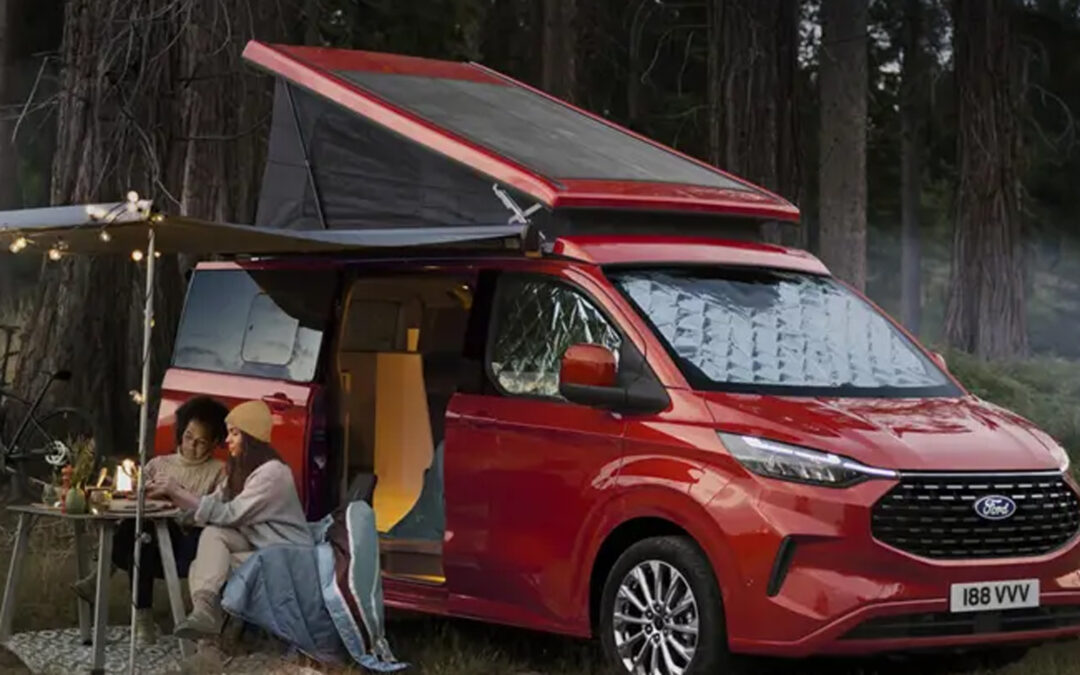The best campervans of 2025
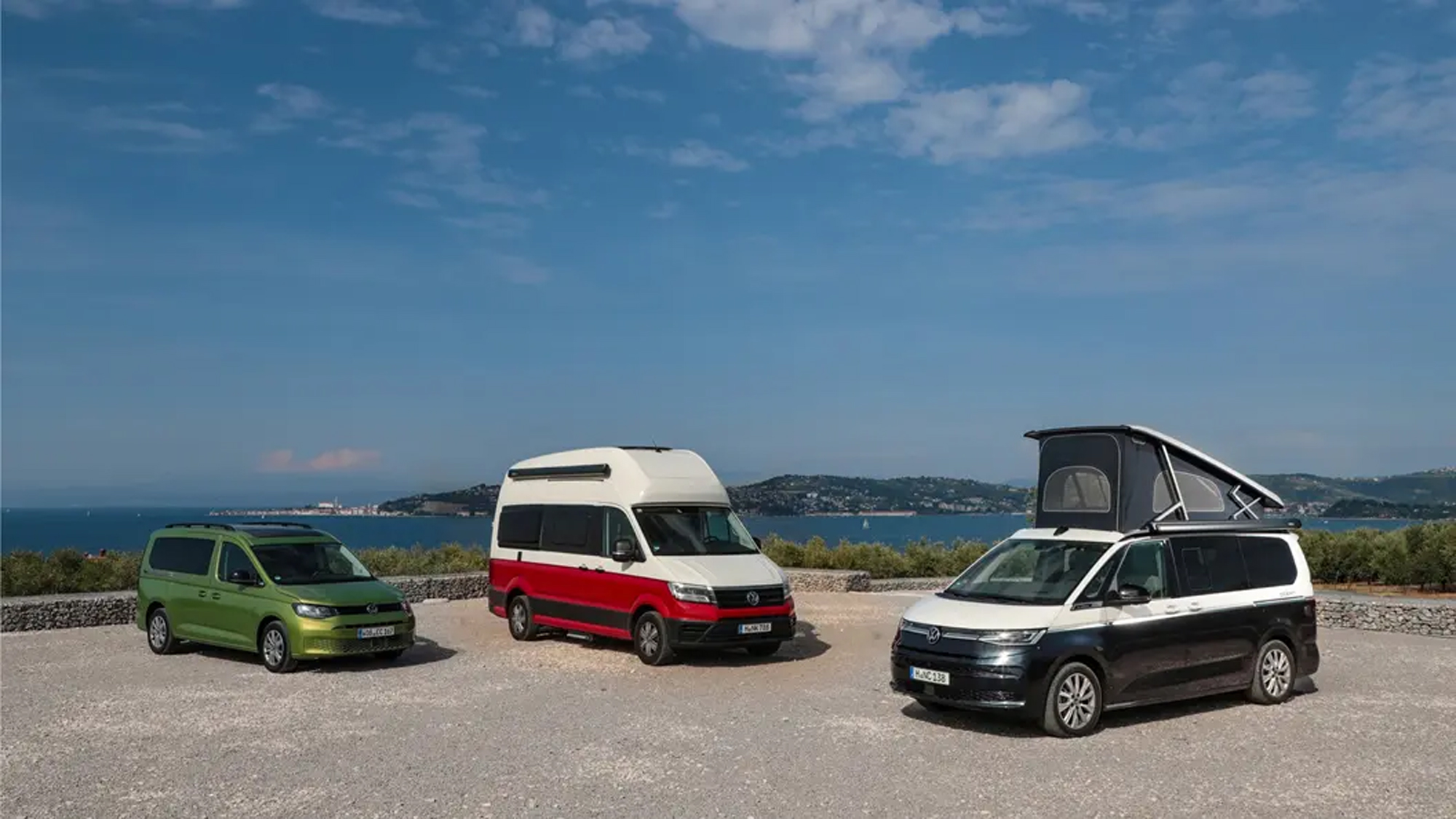
Campervans are more popular than ever and it’s easy to see why. They’re a little home away from home, you only have to pack once and you can go wherever you fancy. They take a lot of the hassle out of travel and make adventuring easier. It helps that the best campervans on the market right now are highly capable, all-purpose vehicles. We see many being used as everyday family cars. They have the load-lugging capability of the best estate cars, with the people-carrying practicality of the best MPVs.
There are literally hundreds of different campervans available to buy new, all with their own merits and quirks. That can make it difficult to work which one is best for you. So, to help you out, here we present what we think are the best campervans currently on the market.
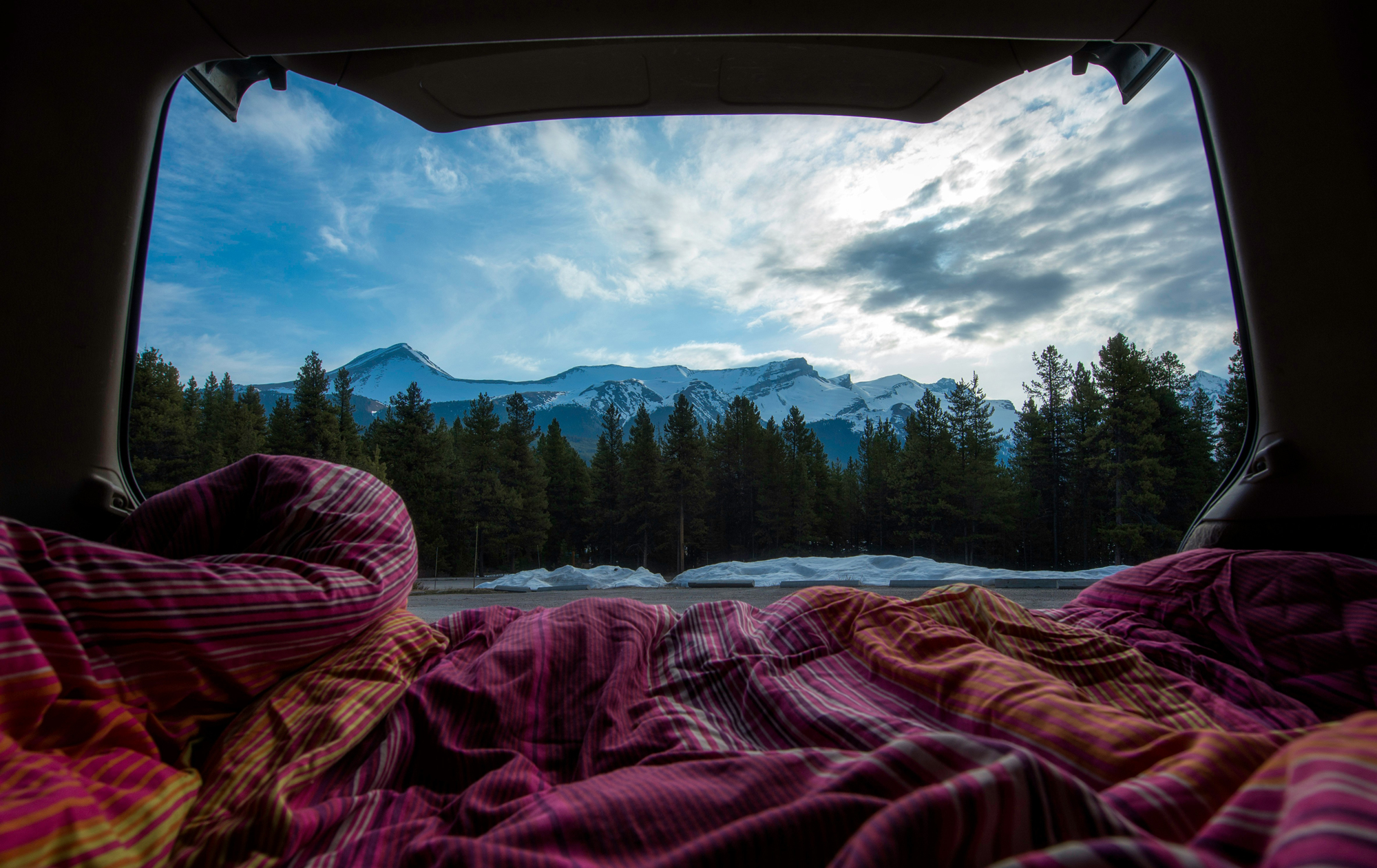
OEM campervans vs third-party conversions
We’re focussing on campervans marketed by their OEMs because they’re the ones we have most experience of, rather than ones built by third-party conversion specialists. We’re taking about the likes of Hymer, Adria, Bailey and Dethleffs, all of which produce a vast array of different models.
All those converters do things slightly differently – they have their own design aesthetics and include thoughtful little features that are unique to their vehicles. But there are so many, and they can be so different from each other, that picking and choosing between them is a near-impossible task. Most owners seem to take a very carefully considered decision between a small selection of very similar vehicles, or immediately fall in love with a specific one.
Many experienced campervan owners wouldn’t even consider an OEM model, but they do have their advantages. They’re available from any of the brand’s dealers and can be fully serviced there, they’re covered by a single warranty, and built to a level of quality the OEM endorses – the quality achieved by third-party outfits is highly variable. All of which means an OEM campervan can be the better option for novices.
Volkswagen California
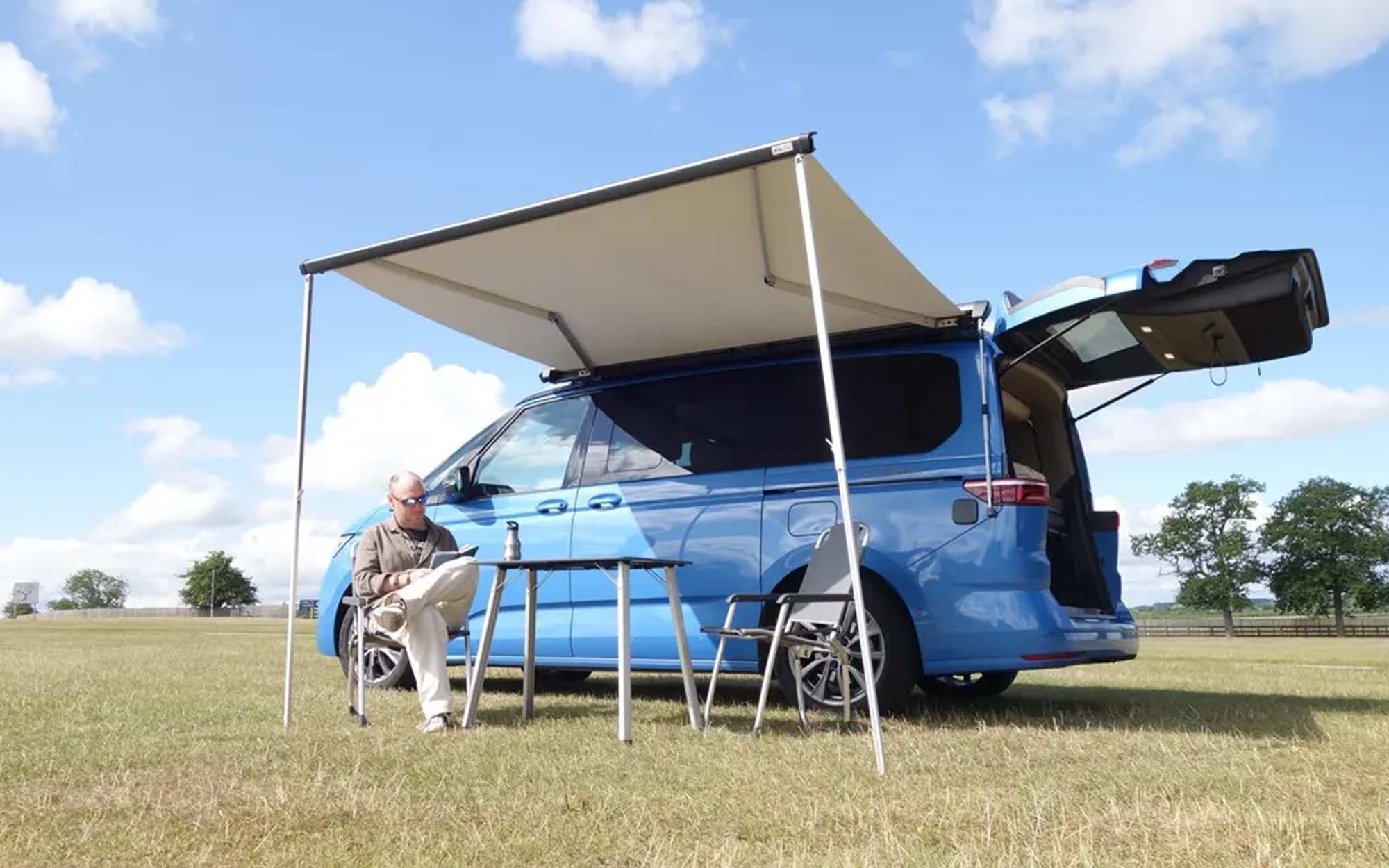
The best campervan for everything, really
Pros: All-round everyday ability, twin-sliding rear doors, plug-in hybrid available
Cons: Compromised kitchen layout, lower bed a faff to build
The latest Volkswagen California is controversially based on the Multivan MPV, rather than the Transporter van platform. The switch has imposed some changes to the interior layout that experienced Cali owners may not be entirely onboard with, but this is a much better vehicle overall.
As in most of the vehicles here, the Cali sleeps four in a two up to down format. The upper bed in the raised roof is bigger and more comfortable, but you’re not exactly slumming it downstairs. There’s plenty of cupboard space, a large drawer-style fridge, and a smartphone-esque touchscreen that controls light and heat and monitors various on-board functions. It always takes a bit of bit to learn how to live in a particular campervan, but the process is pretty easy here, helped by its homely feel.
The Cali’s also a great everyday family car. There’s a vast amount of passenger space, the twin sliding rear doors are brilliantly practical, it feels like a well-sorted SUV to drive, and the diesel can do 45-50mpg without much effort. There’s also a plug-in hybrid that makes this a viable option for company car users.
Mercedes-Benz V-Class Marco Polo
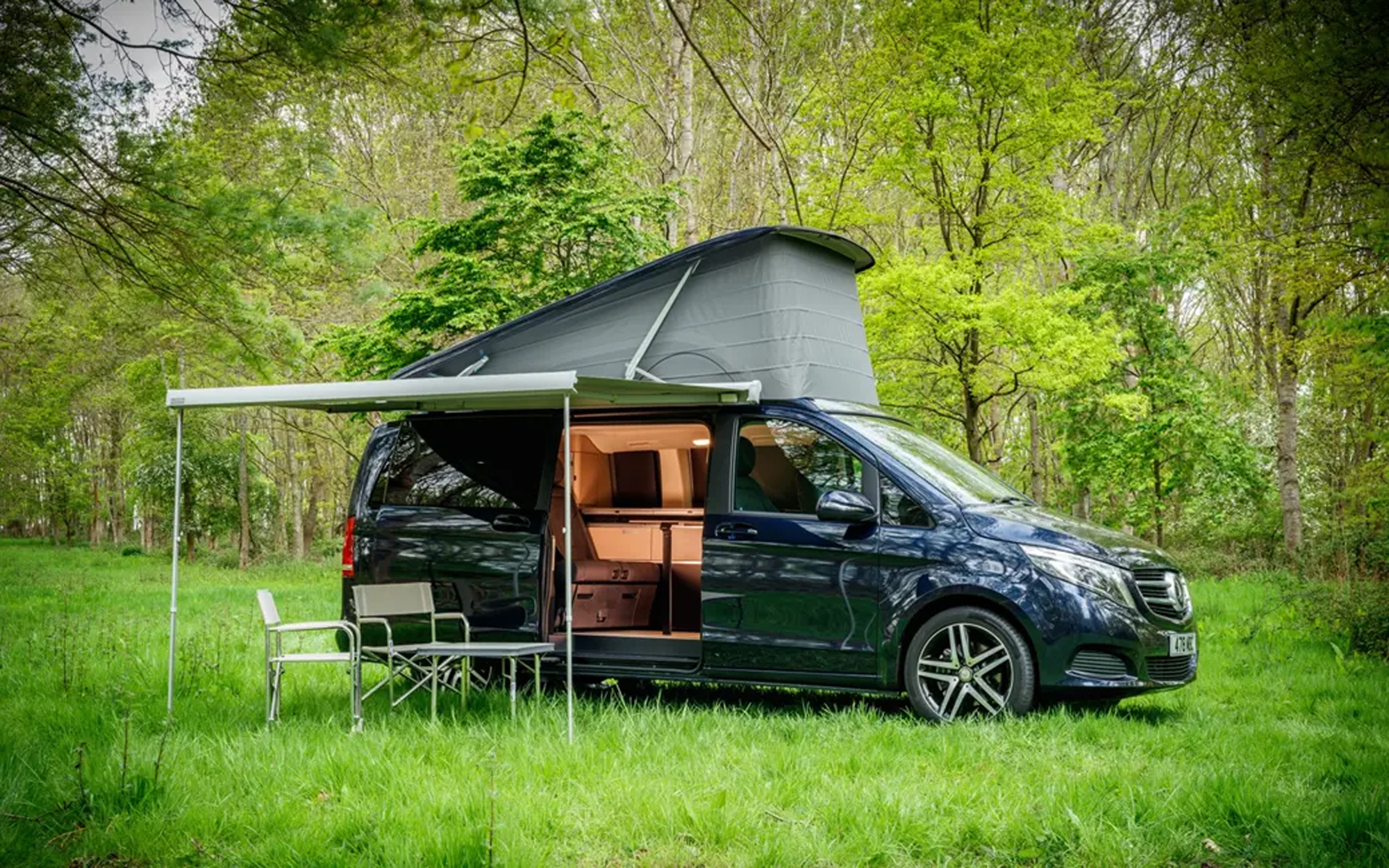
The best campervan for glamping
Pros: Upmarket feel, the nicest campervan to drive, two-burner hob
Cons: Upmarket feel, the cost of it
The Mercedes Marco Polo is spun off the V-class MPV – itself derived from the Vito van – and fitted out by big-name campervan specialist Westfalia. With 233bhp, a nine-speed automatic gearbox, rear-wheel drive and air suspension it’s the best campervan to drive – and the easiest to set up on the level at a campsite.
The interior layout broadly mirrors that of the VW California, except it only has the one rear sliding door on the driver’s side – not exactly ideal. It does one-up the VW with a two-burner hob and deeper sink, and it has a bit more cupboard space, but it ultimately doesn’t feel as spacious. The light colour palette isn’t exactly kid-friendly, either, and not everyone will vibe with living space’s luxury Berlin apartment aesthetic.
Between the single rear door and upmarket interior, the Marco Polo isn’t quite the all-purpose vehicle the California is. But the driving experience is sufficiently superior that you may be able live with its foibles. And its price tag – which can stretch beyond £90,000…
Ford Transit Custom Nugget
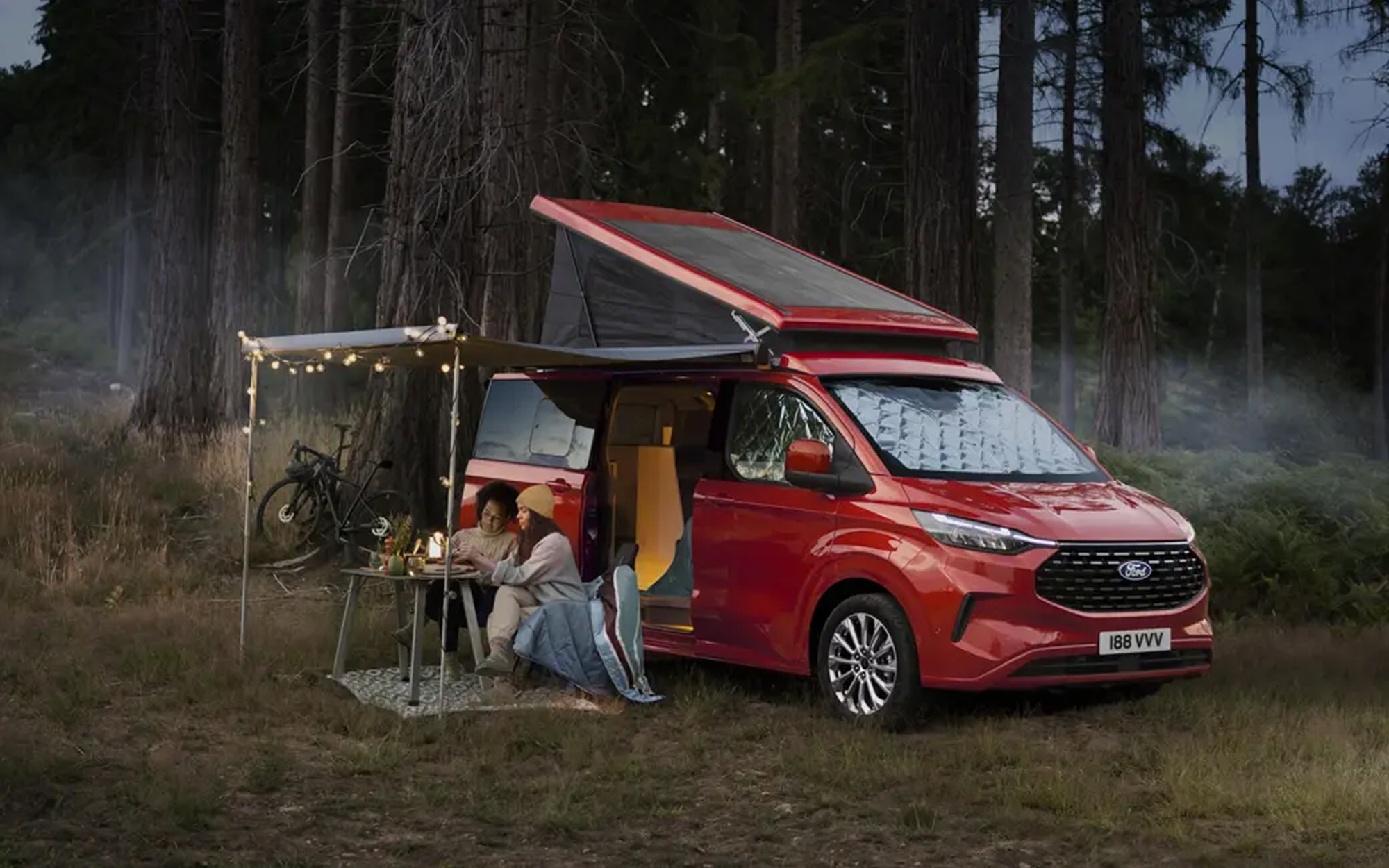
The best campervan for driving enthusiasts
Pros: Handles like a Ford, LWB version is very spacious, most storage space
Cons: Awkward walk-through interior layout, sleeping with your feet in a drawer
We’ve not yet had the opportunity to fully test the latest Ford Transit Custom Nugget – also built by Westfalia – but we’ve been able to crawl all over it on several occasions and know the vehicle it’s based on very well. Overall, the Nugget looks really promising.
We know the Transit Custom is the best-handling off all the mid-size vans and the long-wheelbase version has a huge amount of interior space. The Nugget also promises more cupboard space than any of its rivals, there’s a vast fridge, the external shower runs hot water, there’s an extensive model range including a plug-in hybrid. But there are some layout quirks we have question marks over.
The pop-top roof raises from the rear rather than the front. You can walk through from the front of the living space out of the back, necessitating a curving floorplan. The foot of the lower bed is behind a flap in the built-in cupboards. But we’ll reserve judgement until we’ve actually tested it.
Citroen Holidays
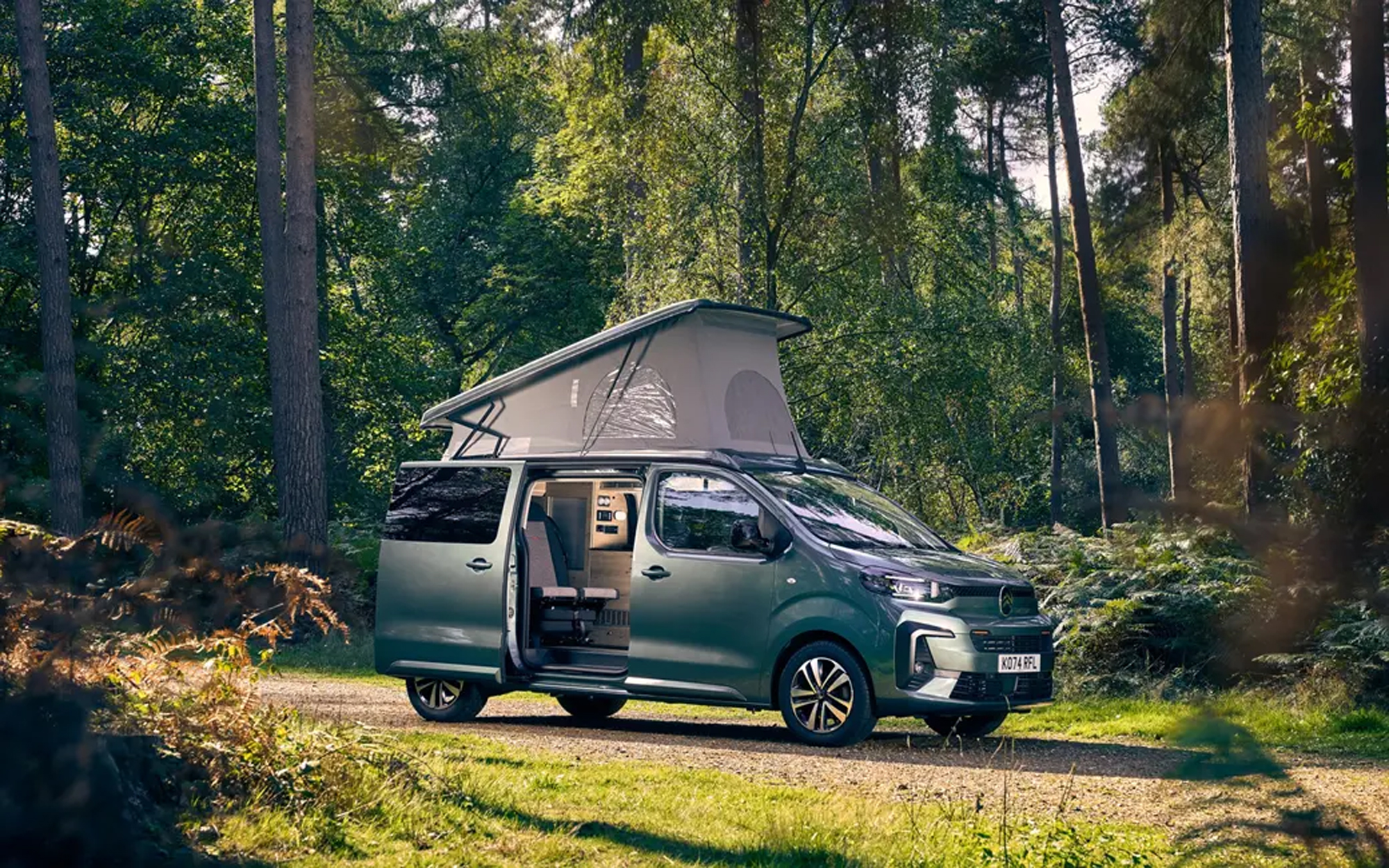
The best campervan for the value-conscious
Pros: Price significantly undercuts rivals, inside/outside kitchen, upper bed’s very comfy
Cons: Lacks space, lacks storage
The Citroen Holidays is the latest contender among the ranks of OEM campers. It starts life as a SpaceTourer – a posh MPV based on the Dispatch van – and is fitted out by camper specialist Bravia. Its UK launch was in Spring 2025 and we’ve not yet got our hands on one for review, but we have had a good nose around it and have experience of the SpaceTourer, hence its inclusion here.
There are plenty of plus points. It has a two-burner hob and twin sliding rear doors, the lower bed is easy to build and the upper bed’s ‘pocket-spring’ mattress is particularly comfortable. The whole kitchen unit can be lifted out and used outside, as well (a two-person job). But it doesn’t feel as spacious as the VW California and Ford Nugget, and there doesn’t seem to be as much storage.
There’s quite a big ‘but’ coming, though. Spec-for-spec, the Holidays costs around £20,000 less than the Ford and VW, and £30,000 less than the Mercedes Marco Polo. That’s the kind of saving that can make us live with a few deficiencies.
Volkswagen Grand California
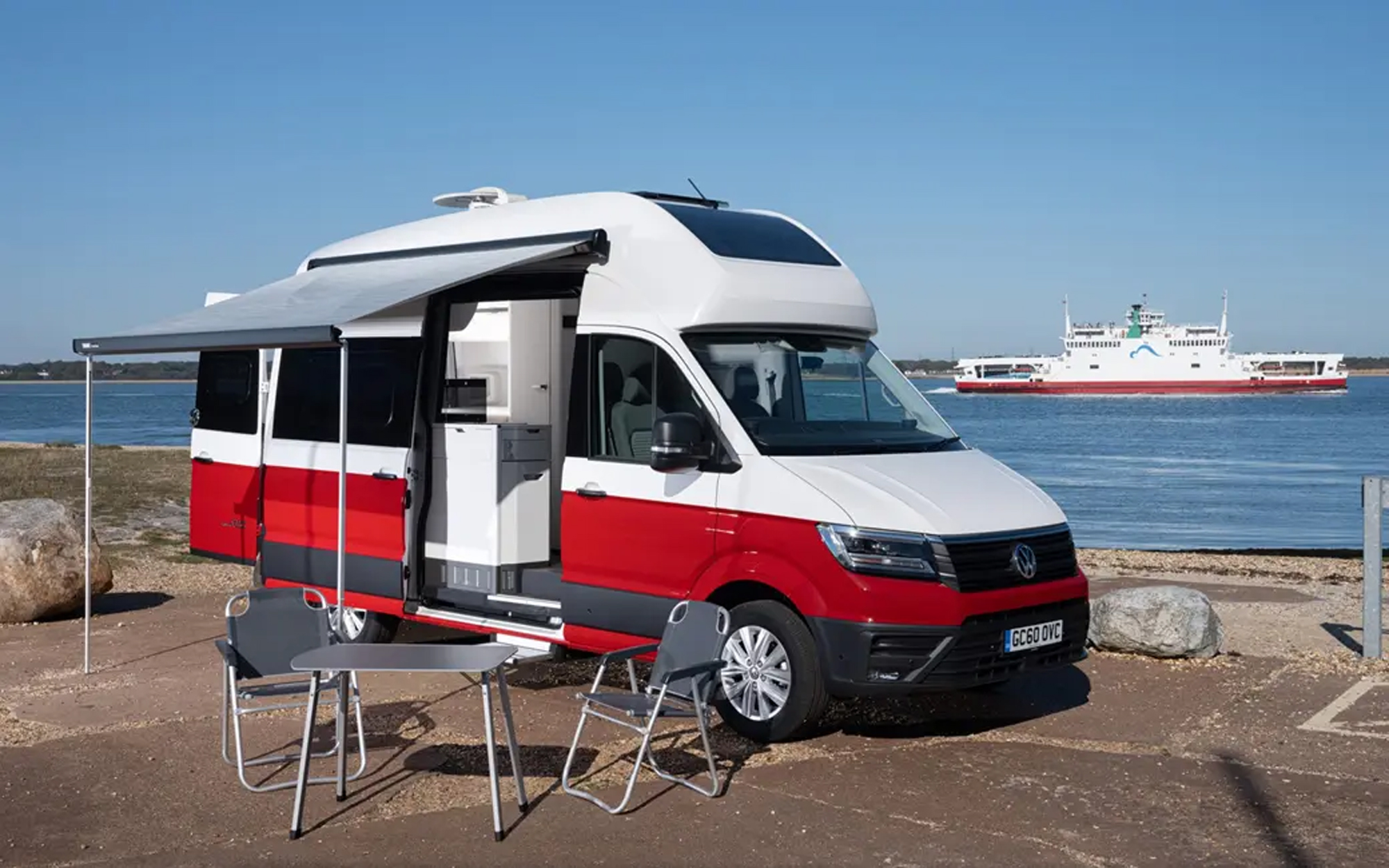
The best campervan for long holidays
Pros: Huge amount of space, proper kitchen and bathroom, costs less than you expect
Cons: It’s a big old bus, two-berth model may require driving licence upgrade.
Based on the big Crafter van, the Volkswagen Grand California treads the line between campervan and motorhome. Of all the vehicles here, it’s by far the easiest to live with simply because there’s more space and facilities in it. There’s a full-size double bed at the back, a toilet/shower room, a home-style kitchen and tons of storage.
In four-berth 600 models, the second bed forms from the dining area. Oddly, the bigger 680 model only has two berths; its gross vehicle weight is 3880kg so, to drive it, you’ll either need a pre-1997 driving licence or take a test to upgrade. It could be worth doing, though, if you want a real home away from home.
The beds and seats are all really comfortable and it feels quite cosy despite the monochromatic colour scheme. It’s much easier to drive than you might expect for a vehicle this size, handles well and it’ll do 35mpg-plus on a long run. It’s even pretty good value with prices starting at £85,000.
Dacia Jogger Sleep Pack Ultimate
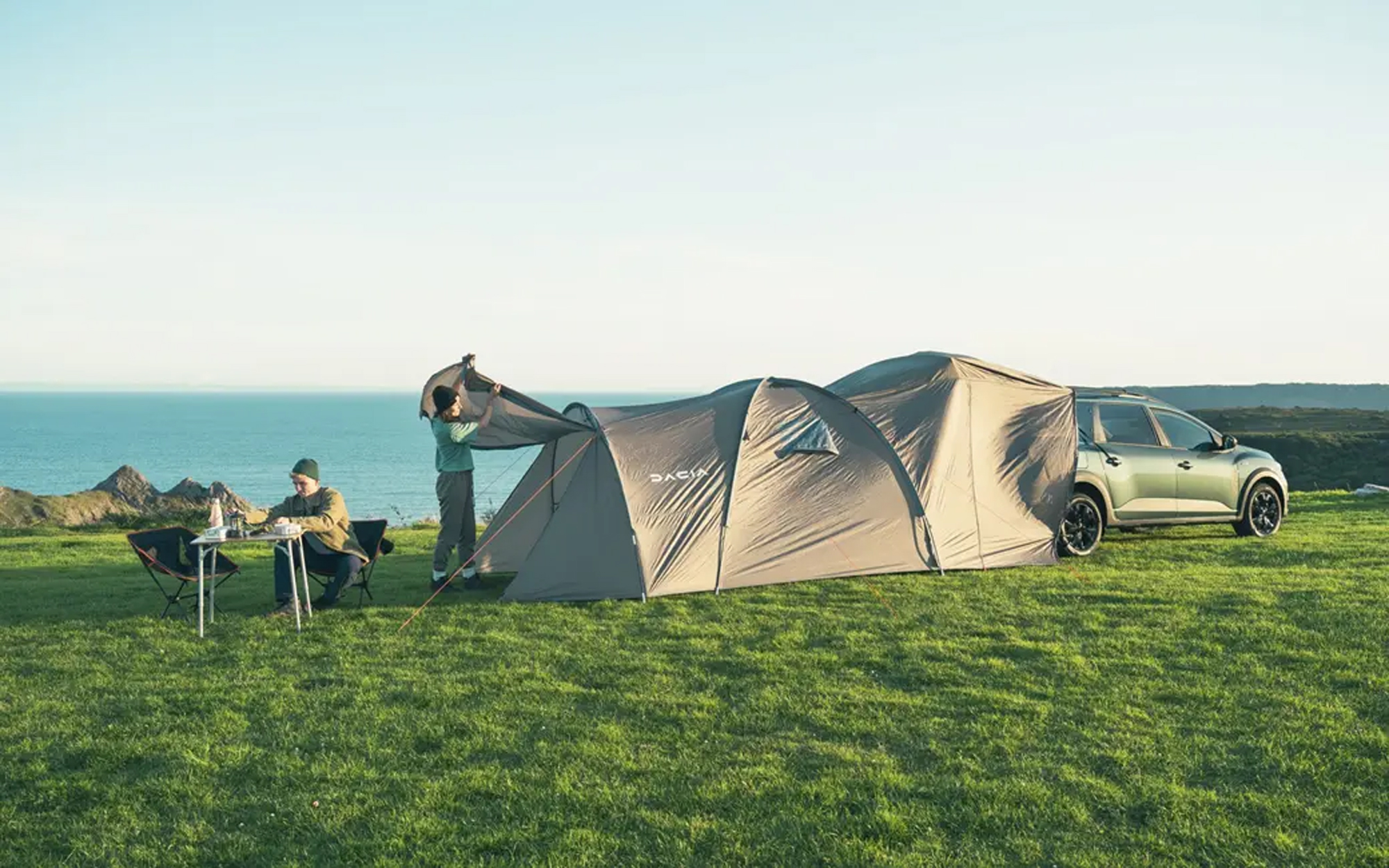
The best campervan for bargain hunting adventurers
Pros: By far the cheapest option, really puts you in touch with nature, easy set-up
Cons: Not much space, not the most comfortable
This is a bit of a cheat as it’s not a ‘proper’ campervan. It’s actually regular Dacia Jogger with an optional kitchen/storage unit that slots into the boot. Come bedtime, you fold the back seats down and the top of the boot unit opens out to create a (just about) double bed. That’s available on its own; the Ultimate pack adds a three-person tent that attaches to the open tailgate.
It’s not the most spacious or comfortable solution, but it’s cosy enough with the window blinds attached. And you feel less vulnerable than you might under canvas while still having the kind of back-to-basics camping experience that a lot of people like. Then there’s the cost. Add the Ultimate pack to a top-spec Jogger and you’ll spend less that half what a base-spec VW California costs.
That comparison is apt because the California Beach comes with a similar boot unit to the Jogger, as does the smaller VW Caddy California. The Caddy is a worthy option, but we’ve not included it here as it isn’t currently listed on the VW Vans website. The Sleep Pack Ultimate is also available with the Dacia Duster and Bigster.

